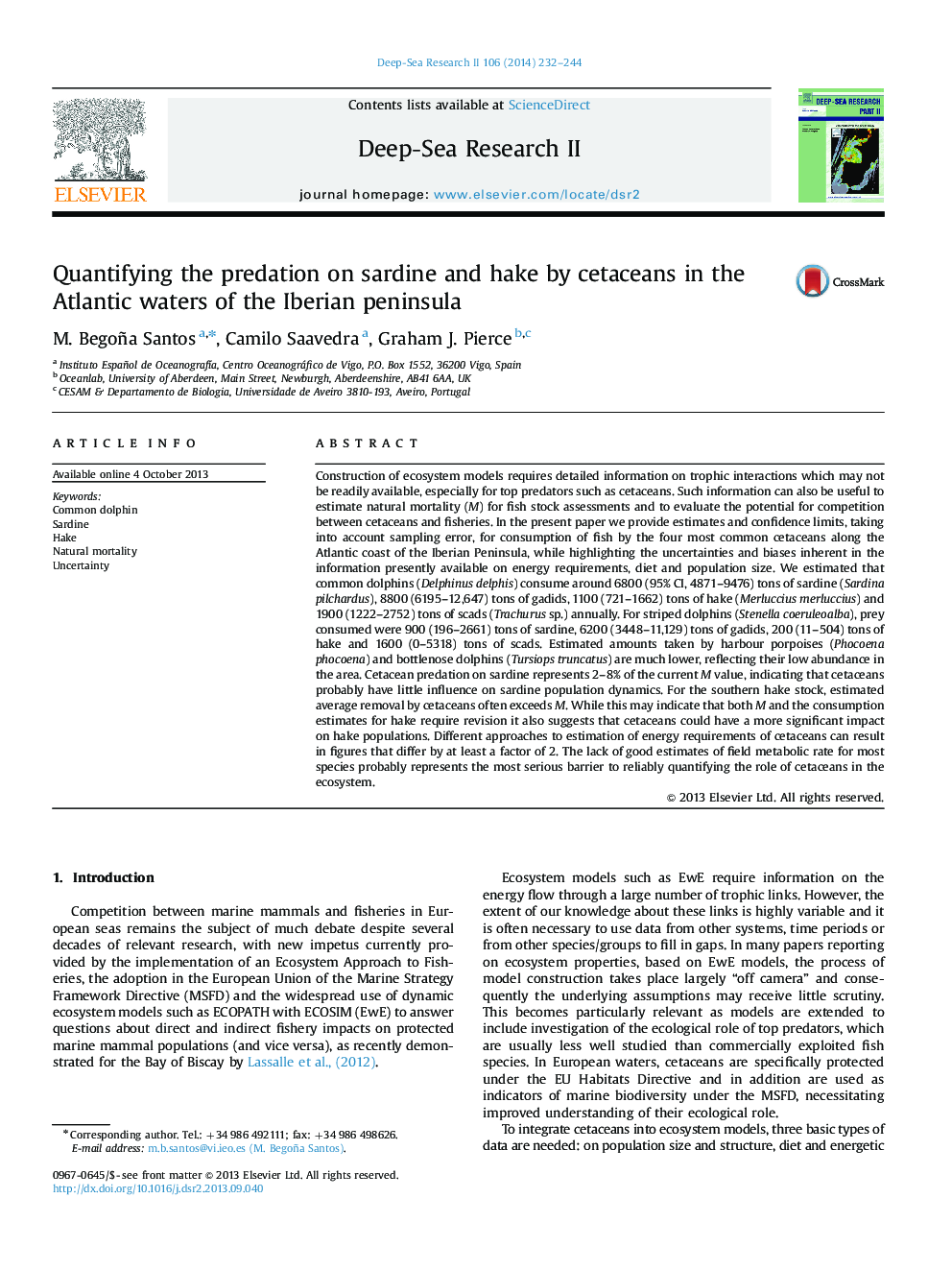| کد مقاله | کد نشریه | سال انتشار | مقاله انگلیسی | نسخه تمام متن |
|---|---|---|---|---|
| 4536342 | 1626434 | 2014 | 13 صفحه PDF | دانلود رایگان |
Construction of ecosystem models requires detailed information on trophic interactions which may not be readily available, especially for top predators such as cetaceans. Such information can also be useful to estimate natural mortality (M) for fish stock assessments and to evaluate the potential for competition between cetaceans and fisheries. In the present paper we provide estimates and confidence limits, taking into account sampling error, for consumption of fish by the four most common cetaceans along the Atlantic coast of the Iberian Peninsula, while highlighting the uncertainties and biases inherent in the information presently available on energy requirements, diet and population size. We estimated that common dolphins (Delphinus delphis) consume around 6800 (95% CI, 4871–9476) tons of sardine (Sardina pilchardus), 8800 (6195–12,647) tons of gadids, 1100 (721–1662) tons of hake (Merluccius merluccius) and 1900 (1222–2752) tons of scads (Trachurus sp.) annually. For striped dolphins (Stenella coeruleoalba), prey consumed were 900 (196–2661) tons of sardine, 6200 (3448–11,129) tons of gadids, 200 (11–504) tons of hake and 1600 (0–5318) tons of scads. Estimated amounts taken by harbour porpoises (Phocoena phocoena) and bottlenose dolphins (Tursiops truncatus) are much lower, reflecting their low abundance in the area. Cetacean predation on sardine represents 2–8% of the current M value, indicating that cetaceans probably have little influence on sardine population dynamics. For the southern hake stock, estimated average removal by cetaceans often exceeds M. While this may indicate that both M and the consumption estimates for hake require revision it also suggests that cetaceans could have a more significant impact on hake populations. Different approaches to estimation of energy requirements of cetaceans can result in figures that differ by at least a factor of 2. The lack of good estimates of field metabolic rate for most species probably represents the most serious barrier to reliably quantifying the role of cetaceans in the ecosystem.
Journal: Deep Sea Research Part II: Topical Studies in Oceanography - Volume 106, August 2014, Pages 232–244
